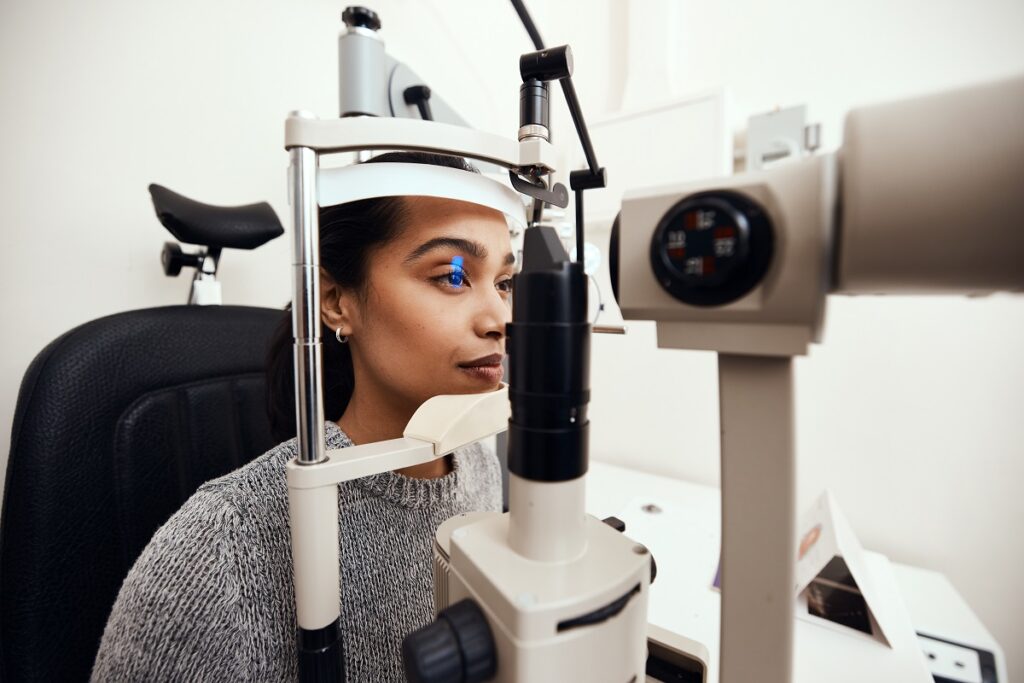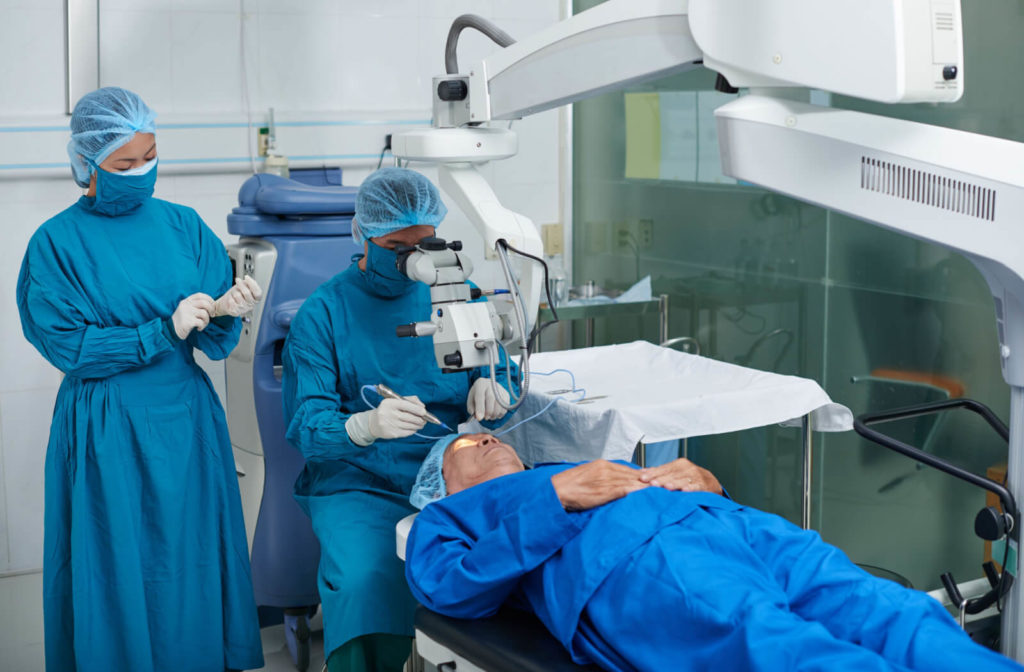Discover a Trusted Optometrist Chino for Family Eye Care Solutions
Discover a Trusted Optometrist Chino for Family Eye Care Solutions
Blog Article
Recognizing the Comprehensive Role of an Optometrist in Modern Eye Treatment
In the developing landscape of medical care, the range of an optometrist's role has considerably widened, extending well beyond the confines of traditional vision improvement. With innovations in modern technology and an increasing focus on preventative care, eye doctors are essential in diagnosing and managing persistent eye conditions, while also taking part in early disease discovery. Their experience in advanced diagnostic techniques such as optical comprehensibility tomography is indispensable. How do these responsibilities intersect with their role in advertising total eye wellness, and what does this mean for client results in a collective healthcare environment?
Expanded Range of Technique
In recent years, the function of optometrists has evolved dramatically, with several experts now welcoming an increased extent of technique that expands past typical eye evaluations. This evolution reflects the expanding acknowledgment of eye doctors as main doctor in the field of eye care. Their duties now encompass a vast array of solutions, consisting of prescribing medicines for eye problems, managing persistent eye conditions, and executing minor surgeries. This change has actually been driven by innovations in optometric education and learning, enhanced medical training, and the enhancing need for detailed eye care services, specifically in underserved areas.
Additionally, eye doctors are currently much more entailed in joint care, working very closely with eye doctors, health care physicians, and other medical care professionals to guarantee alternative client treatment. This interprofessional cooperation is critical in managing complicated situations that call for a multidisciplinary approach. Additionally, optometrists are playing a crucial function in public health campaigns, such as vision screenings and eye health education, targeted at improving neighborhood health end results.
The broadened scope of practice for optometrists not just improves their ability to supply thorough treatment yet additionally deals with the growing need for efficient and easily accessible eye care solutions, contributing to total health care renovations.
Early Illness Discovery
Very early detection of eye illness is increasingly coming to be a focal point in the broadened role of optometrists. As main eye care service providers, eye doctors are uniquely placed to determine early indicators of ocular conditions such as glaucoma, macular degeneration, diabetic person retinopathy, and cataracts. This essential function is important, as very early diagnosis can dramatically boost the monitoring and prognosis of these problems, possibly avoiding vision loss and improving individual outcomes.
Eye doctors utilize extensive eye exams to discover refined changes in vision and eye health. These examinations often consist of evaluations of aesthetic skill, intraocular pressure, and retinal health. The capacity to recognize early indications of systemic wellness concerns, such as hypertension and diabetic issues, through eye indicators better emphasizes the importance of routine eye check-ups. Early treatment is not just valuable in preserving vision but likewise in decreasing health care prices related to innovative illness treatments.
Furthermore, optometrists play an essential role in patient education, stressing the value of regular eye exams as part of general health care. By cultivating a proactive method to eye care, optometrists add significantly to public health, guaranteeing conditions are captured and handled properly before they can proceed.
Advanced Diagnostic Strategies
Advanced diagnostic techniques have actually reinvented the method of optometry, making it possible for experts to discover and monitor eye diseases with extraordinary accuracy. Technologies such as optical comprehensibility tomography (OCT) give high-resolution, cross-sectional photos of the retina, facilitating early detection of problems like glaucoma and macular deterioration.
An additional vital innovation is electronic retinal imaging, which records comprehensive views of the retina utilizing high-def cameras. This modern technology is critical in recognizing adjustments in retinal framework with time, thus assisting in the monitoring of conditions Homepage like diabetic retinopathy. Aesthetic area testing, improved by computer-aided systems, allows for exact mapping of a person's area of vision, necessary in diagnosing and tracking glaucoma progression.
Corneal topography, an additional significant analysis tool, creates topographic maps of the cornea's surface. This is specifically beneficial in fitting get in touch with lenses and intending refractive surgery. These sophisticated analysis techniques collectively enable optometrists to provide aggressive, targeted care, making sure far better patient outcomes and strengthening their essential function in eye health management.
Managing Chronic Eye Conditions
Handling chronic eye problems is a cornerstone of optometric treatment that calls for a comprehensive understanding of various eye illness and their long-lasting ramifications. Eye doctors play a pivotal role in diagnosing, managing, and monitoring problems such as glaucoma, diabetic retinopathy, and age-related macular degeneration. These problems, if left unattended, can bring about considerable visual problems or loss of sight, highlighting the critical value of ongoing treatment and monitoring.
Eye doctors employ an array of diagnostic devices, including optical comprehensibility tomography (OCT), aesthetic area testing, and fundus digital photography, to examine the development of these persistent conditions. By carefully checking modifications in eye health, eye doctors can adjust therapy strategies to reduce condition progression. This might involve prescribing drugs, recommending way of life alterations, or collaborating with ophthalmologists for surgical interventions when essential.

Duty in Preventive Treatment
Preventive treatment is an essential aspect of optometry that concentrates on maintaining eye wellness and stopping the onset of ocular conditions. Eye doctors play a vital role in very early detection and avoidance, employing regular eye assessments to recognize threat variables and subtle changes in eye wellness. Eye Doctor. These exams are not simply concerning vision correction yet incorporate a comprehensive assessment of eye features and structures, making it possible for the identification of problems such as glaucoma, cataracts, and macular deterioration at a beginning
Along with diagnostics, eye doctors enlighten people on lifestyle selections that advertise eye wellness, such as appropriate nourishment, UV protection, and the value of normal eye examinations. They suggest on the right use electronic tools to avoid digital eye strain, a growing concern in the digital age. Eye doctors likewise provide guidance on protective eyeglasses for recreational and work-related activities, reducing the risk of injury.
Precautionary eye care includes systemic health issues that show up in the eyes, such as diabetic issues and hypertension. By teaming up with various other health care professionals, eye doctors add to alternative individual care, highlighting the interconnectedness of eye and systemic health. This aggressive technique is necessary in guarding visual acuity and overall health.
Verdict
Optometrists now inhabit a critical duty in contemporary eye care, characterized by an increased extent that consists of diagnosing and taking care of chronic eye conditions, suggesting medications, and performing small operations (Eye Doctor Optometrist). Their competence in very early condition discovery is enhanced by sophisticated analysis methods such as optical coherence tomography and electronic retinal imaging. By stressing preventative treatment and individual education, optometrists contribute substantially to general eye health, official source working together with various other medical care experts to ensure effective and detailed client results

In addition to diagnostics, eye doctors inform people on way of living selections that advertise eye wellness, such as appropriate nutrition, UV security, and the relevance of routine eye exams.Precautionary eye treatment expands to systemic health problems that materialize in the eyes, such as diabetes mellitus and hypertension.Optometrists now inhabit a crucial role in modern-day eye treatment, defined by an expanded extent that consists of detecting and handling chronic eye conditions, recommending medicines, and carrying out small medical treatments.
Report this page